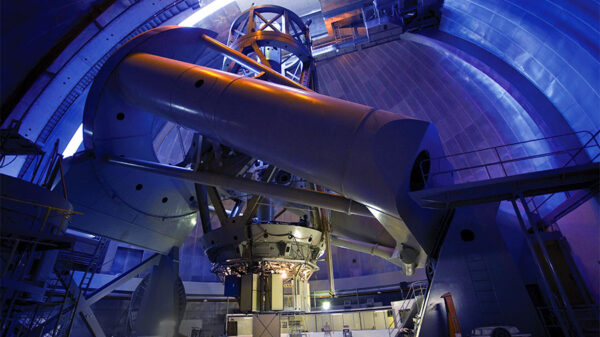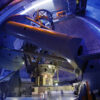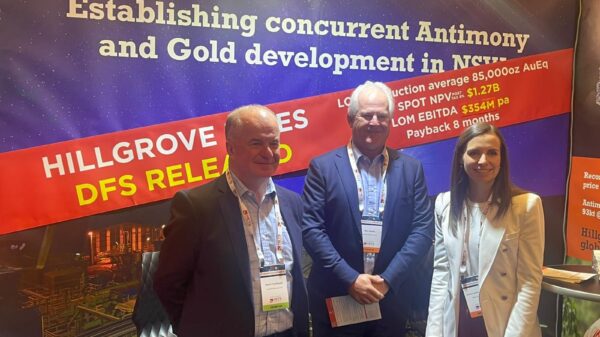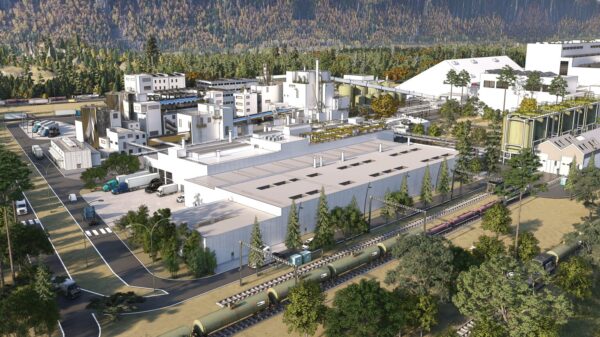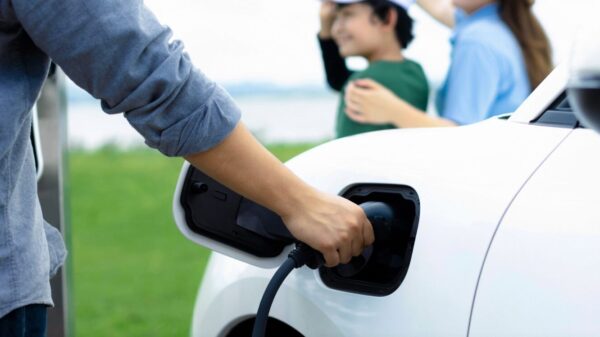The strategic importance of lithium in the global economy and geopolitical tensions can contribute to misunderstandings, some of which can get in the way of actions necessary to implementing the green shift and reducing the amount of carbon spat out every year into the atmosphere.
The questions that arise are both relevant and important.
This mineral is largely responsible for battery metals that go into EV’s, which are considered to be a net positive for the green environmental shift, but how environmentally safe are they in terms of their production?
Additionally, as a relatively new and evolving technology, lithium-ion batteries may not always be fully understood, leading to outdated perceptions. And how safe are they exactly? Especially given recent issues regarding lithium ion batteries causing house fires and exploding.
To gain a more accurate understanding of the metal, it’s essential to rely on credible sources, stay updated on the latest developments and engage in informed discussions.
So in this lithium roundup let’s try and answer a few of these questions.
Political tensions manifest in the Lithium Triangle
The “Lithium Triangle” encompasses the arid regions of Chile, Argentina, and Bolivia.
The region’s lithium-rich salt flats, or salars, account for a substantial portion of the world’s known reserves, making it arguably the biggest player in the clean energy transition.
In recent years, it’s become a focal point for global production, primarily spurred on by the demand for lithium-ion batteries used in electric vehicles and renewable energy storage solutions.
However, the triangle’s political landscape has been marked by turbulence and complexity.
Bolivia’s government, for instance, has pursued a more interventionist approach to lithium mining in previous years, while Chile and Argentina have attracted significant foreign investment and raised the ire of local indigenous populations for failure to meet their environmental concerns.
They may have a point as well.
Lithium mining has had a detrimental impact on the indigenous people of South America, driving hundreds from their ancestral lands. Initially, mining giants in the region have pledged to consult with indigenous communities to ensure environmentally responsible practices. But recent protests at the Atacama salt lithium property in Chile, which blocked production for Chilean giant Sociedad Química y Minera (SQM) (NYSE: SQM), have thrown into question the transparency of that arrangement.
These corporations have failed to include indigenous voices in their operations, prompting community leaders to rightfully demand a share of the profits. Francis Mandoca, the head of the environmental unit of the Atacama Indigenous Council in Chile, said in October that despite branding the lithium mines as “sustainable” energy sources, they are far from it, as they harm one area to benefit another.
Frustration and concern loom large among the community, as the ponds they once relied on have been contaminated with harmful chemicals, rendering them unusable.

Spodumene pools in Argentina. Image from Ksenia Ragozina via Shutterstock
Geopolitical tensions part of a wider conflict
At the core of the struggle is the ongoing economic struggle over China’s stranglehold over the global lithium market. Multiple companies from the United States and political friendly countries have taken to the triangle, including Albemarle Corporation (NYSE: ALB), the newly merged Arcadium Lithium plc (NYSE: ALTM) (ASX: LTM). Not to be outdone, Chinese companies Ganfeng Lithium (SZSE: 002460) (SEHK: 1772) and Tianqi Lithium (SZSE: 002466) (SEHK: 9696) have also staked claims.
There aren’t many juniors left in Argentina after a significant rash of mergers, but those that remain like Lithium South Development Corporation (TSXV: LIS) (OTCQB: LISMF) (Frankfurt: OGPQ), scratch out deals with larger companies to compete. For example, Lithium South recently completed a deal with South Korean based Pohang Iron and Steel Company (POSCO) (KRX: 005490) for the development of the Hombre North Lithium Project (HMN Li Project) in the Salta Province of Argentina, where both companies have significant operations.
Other early stage companies include developing the sector include Argentina Lithium & Energy Corp. (TSXV: LIT) (OTC: PNXLF), Recharge Resources Ltd. (CSE: RR) (OTC: RECHF).
Read more: Lithium South and POSCO Holdings ink mutual development agreement
Read more: Lithium South Development technical report shows 40% increase in lithium recovery
India represents an alternative to the big lithium jurisdictions
India exists largely outside of the orbit of these large scale geopolitical conflicts. It’s known to have significant deposits, particularly in the form of lithium-bearing pegmatite minerals. The country’s resources are primarily found in the states of Jharkhand, Bihar, and Rajasthan. However, India’s production and reserves are relatively modest compared to major lithium-producing countries like Australia, Chile, and China.
India has been exploring ways to tap into its lithium reserves to meet the increasing demand for batteries, driven by the growing electric vehicle (EV) market and renewable energy storage solutions.The country is taking steps to encourage domestic exploration and extraction to reduce reliance on imports.
Beyond their own domestic ambitions, Indian companies have been looking to other jurisdictions to meet quotas necessary to fulfill their market ends.
For example, on Monday, Khanij Bidesh India Limited (KABIL) signed an agreement with the state-owned Catamarca Minera Y Energetica Sociedad Del Estado to kick off what is officially the first-ever lithium exploration and mining project undertaken by a government owned company from India.
Kabil will start exploring and developing five lithium brine blocks located in the Catamarca province of Argentina. Additionally, Kabil is establishing a branch office in Catamarca, with the project’s estimated cost being approximately ₹200 crore (CAD$32 million).
The agreement gives Kabil the exploration and exclusivity rights for five blocks wherein it can assess, prospect, explore, and gain exploitation rights for commercial production for anything the company finds there.
This endeavour will not only advance KABIL’s efforts to source lithium for India but also facilitate the acquisition of technical and operational expertise in brine-type lithium exploration, exploitation, and extraction.

Production plant at Pilbara Minerals. Image via Pilbara Minerals.
Australia is home to some of the best lithium deposits
With the exception of the lithium triangle, Australia has the largest lithium deposits in the world and it’s in a much more stable political environment with better regulations and protections. Unsurprisingly, it’s also home to some of the largest and well-heeled lithium companies operating in the space.
Australian lithium producer Pilbara Minerals (ASX: PLS) boosted its sales contract with Chinese lithium giant Ganfeng Lithium over the next three years. Pilbara also negotiated the option to boost its spodumene concentrate tonnage.
The company’s flagship Pilgangoora operation in Western Australia will provide a total allocation of up to 310,000 tonnes per annum (ktpa) for the years 2024, 2025, and 2026, extending the originally inked agreement from 2017.
Pilbara said it will base all concentrate sales on the prevailing market price. The company also pointed out that the increased supply to Ganfeng is separate from the ongoing progress of Pilbara’s strategic partnership process. The company anticipates concluding that process in March of 2024.
Pilbara intends to investigate joint opportunities in downstream lithium conversion through this partnership.
As the largest independent lithium miner in Australia, the company has been actively researching methods to enhance the value of its hard rock spodumene ore for the purpose of expanding its business. As a part of this strategy, Pilbara is currently constructing a demonstration plant to process lithium extracted from Pilgangoora.
If powered by renewable energy, the technology has the potential to reduce carbon emissions by over 80 per cent during one of the most energy-intensive stages of lithium battery material production. Pilbara Minerals anticipates that the plant will enable it to produce one million tonnes of spodumene concentrate next year.

A map of the Yellowknife lithium property. Image via Li-Ft Power.
Canada’s lithium reserves and regulatory climate make it attractive
Canada has long been a friend to the United States and it’s therefore a no-brainer that it would play ball in the attempt to break China’s dominance.
It has emerged as one of the jurisdictions in recent years due to its abundant natural resources, supportive regulatory environment and growing global demand for lithium-ion batteries.
The country boasts significant reserves particularly in provinces like Quebec and Ontario.
Additionally, Canada’s commitment to sustainable and responsible mining practices aligns with the increasing focus on environmental and ethical sourcing of critical minerals. This has attracted both domestic and international investment in lithium exploration and extraction projects.
Beyond the regulatory environment it’s quieter politically. Unlike the lithium triangle, protests don’t often affect production and there’s no untoward threat of government retaliation, because of the relative stability of the economy.
That’s why most of the news coming out of Canada is about positive lithium assays.
For example, Li-FT Power Ltd. (TSXV: LIFT) (OTCQX: LIFFF) (Frankfurt: WS0) reported assays from eight drill holes at its BIG West, Nite and Fi Main pegmatites in the Yellowknife Lithium Project in the Northwest Territories.
“The impressive near-surface high grade intercepts at Fi-Main confirm for the first time that grades and widths are improving to the North on the Fi-Main structure,” said David Smithson, senior vice president of geology of LIFT.
Then there’s LithiumBank Resources Corp. (TSXV: LBNK) (OTCQX: LBNKF) which announced highlights from its updated preliminary economic assessment for its Boardwalk Lithium Brine Project in Alberta.
The company remains focused on a new direct lithium extraction technology because it doesn’t have to deal with protesters or egregious regulators.
Read more: Lithium South near completion of production well and economic assessment at flagship operation
Read more: Lithium South Development updates leadership roster, appoints new director
Lithium-ion batteries could be dangerous
In recent years, a growing concern has arisen regarding poorly designed and uncertified lithium-ion batteries causing numerous fires worldwide. The most recent incident occurred in a subway car in Toronto, Canada.
New York City has also experienced multiple fires in recent years, with some resulting in fatalities. As a result New York has taken the lead in advocating for legislation that would completely ban the sale of uncertified e-bike batteries in the area.
Rechargeable lithium-ion batteries, also known as li-on batteries, find common usage in rechargeable products and are generally safe. However, they share safety risks with other battery types, including overheating, fires, and explosions. They are more susceptible to damage compared to other battery types. Additionally, they can pose hazards in specific conditions due to their increased volatility.
Frequently the fires result from individuals making modifications to electric bikes, using chargers from aftermarket companies, or employing damaged battery cells.
Despite all of these issues, the batteries used in electric vehicles have demonstrated a high level of safety. A recent study predicts a potential total of approximately 900 EV fires between 2023 and 2050, which in practical terms represents a relatively low number.
Nevertheless, in cases where electric vehicle batteries do experience overheating, they become vulnerable to a phenomenon known as “thermal runaway.” Faults within the battery can initiate this chemical reaction, whether they stem from internal issues like internal short circuits or external damage. In severe instances, thermal runaway can lead to the battery catching fire or exploding.
Stats show anxieties are overblown
The study shows an average frequency of six fires per million EVs in Australia. This is consistent with the global average.
As a result, the study projects that Australia will encounter 9 to 10 EV fire incidents annually in 2030, 37 to 42 EV fire incidents annually in 2040, and 84 to 95 EV fire incidents annually in 2050 in a population of millions.
Regardless, to mitigate these risks experts are considering the development of an EV fire risk control framework. This framework aims to identify and recommend appropriate measures for enhancing life safety, managing lithium-ion batteries, addressing charging concerns, handling EVs, and determining suitable EV locations.
Anthropogenic climate change is a fact of life. The planet is getting demonstratively hotter and it’s an issue that deeply effects everyone around the world in some way. Governments at all levels in most countries around the world have recognized the need for a transition to clean energy. Internal combustion engines produce greenhouse gasses, and one of the key ways out of that conundrum is through the electrification of transportation.
Lithium South Development Corporation is a sponsor of Mugglehead news coverage
.
Follow Joseph Morton on Twitter
joseph@mugglehead.com







